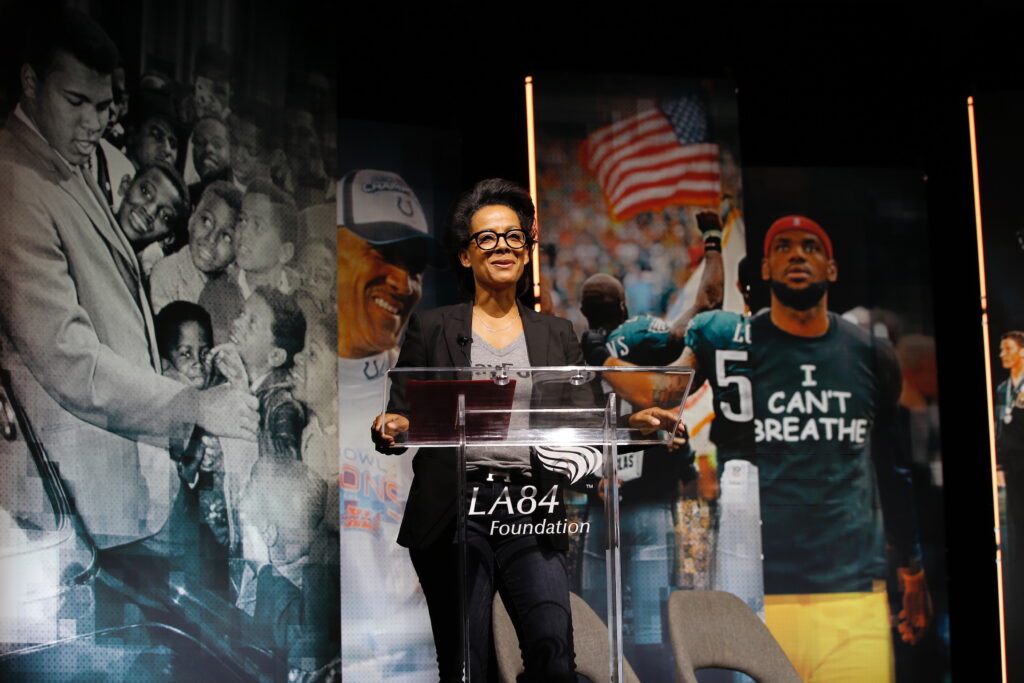
Funding cuts to youth sports and P.E. are leaving administrators tasked with providing relevant educational experiences with less financial resources. This growing trend has led to a common result: eliminating physical education classes from the American educational curriculum.
Only six American states require physical education for students across every grade level. These cuts fall greatest on underserved communities. While such budget cuts only add to the nation’s education disparity, experts point to eliminating P.E. as a social justice issue with not just educational consequences, but grave health consequences.
One in five children and adolescents in the United States are obese, a percentage that has doubled for children and quadrupled for adolescents over the last 30-years. Obesity rates are lowest for American children whose homes are in the highest income group, and highest amongst low and middle income group households. Non-Hispanic whites have the lowest obesity prevalence (14.1-percent), with the highest rate found amongst Hispanic children (25.8-percent), followed by non-Hispanic black children (22-percent).
With education budget cuts unlikely to cease, a number of nonprofit organizations have stepped to the plate to curb the growing trend of eliminating P.E. and school-based sport access in underserved communities.
Speaking at the LA84 Foundation’s 2018 Summit, LA84 president and CEO, Renata Simril, referred to lack of access to P.E. a “social justice issue.”
“In school districts across the country, teachers and administrators trying to provide educational opportunities for kids under the No Child Left Behind Act are required to shift focus towards more math and science-based curriculums without increases in budgets to provide for this increased education,” Simril remarked. “Health care, salary and benefit costs have also caused strains on school districts trying to provide all of the resources. We have gotten away from what works. It has been seen as easier for school districts to cut out enrichment programs, sports being one of them, but also art, music and theater.”
For Simril and those researching the space, this decision is viewed as hugely consequential. Simril references the Oakland Unified School District, which facing millions in budget cuts, eliminated a number of sports.
“Struggling with a budget shortfall, Oakland Unified School District decided to eliminate much of its sport program,” Simril said. “What they don’t realize about the impact of that decision is that sport in so many ways can be a positive tool for engagement. Sport readies kids to be able to get the academic enrichment they will receive. Sport isn’t a nice thing to have, it is a must-have in the construct of how we educate the whole child.”
Data Simril has reviewed as part of LA84’s Play for All Movement shows access to school-based athletic opportunities has positive effects on students’ academic performance.
“Los Angeles Unified School District’s own data shows that kids in the district graduate at a rate of about 77-percent with an average GPA of 2.1, whereas the California Interscholastic Federation’s survey of student-athletes found that 92-percent of student-athletes graduate from high school with an average GPA of 2.8,” Simril said. “If our collective goal is to make sure kids graduate and build bridges to brighter futures, I’d say to policymakers, school districts and academicians that there is something about sport and we should go back to what we know works so we can make sure we are collectively helping kids.”
While LA84 has launched the Play For All Movement, Simril recognizes that sport access shortfalls can not be overcome alone by the organization she leads.
“The crisis is real, but it is far too big for anyone to solve alone,” she noted. “We created the Play For All Movement as a space for all of us to come together. Let us all speak with one voice and harness our care and work to support the next generation.”
Another organization work to eliminate barriers to sport access is Good Sports, a national nonprofit addressing the declines in youth sport participation by tackling the issue of rising equipment costs and bridging the resource gap for underserved kids. By partnering with sporting goods manufacturers, Fortune 500 companies, and professional sport teams and athletes, the organization has donated over $34 million in new equipment, apparel and footwear to nearly 5 million children in need across all 50 states since 2003.
Like LA84, Good Sports is seeing the harmful effects of athletic budget cuts to children’s futures.
Two years ago in Bridgeport, CT, school athletic budgets were cut by 20%. Now they face another round of cuts, which could potentially take sports programs away from students. This is where Good Sports comes in. Over the past several months, Good Sports has donated over $160,000 in equipment, footwear and apparel, enabling the schools to allocate funds in other ways, save sports programs and keep students active.
“Increased costs associated with playing sports are contributing to significant declines in physical activity for children,” said Good Sports COO Christy Keswick. “If kids don’t have the opportunity to be active, they miss out on proven lifelong benefits to their physical and mental health, academic achievements and social skill development. Good Sports is working to tackle these issues and give more kids access to the vital benefits of playing sports.”
Get the free weekly newsletter so you can win the game.
